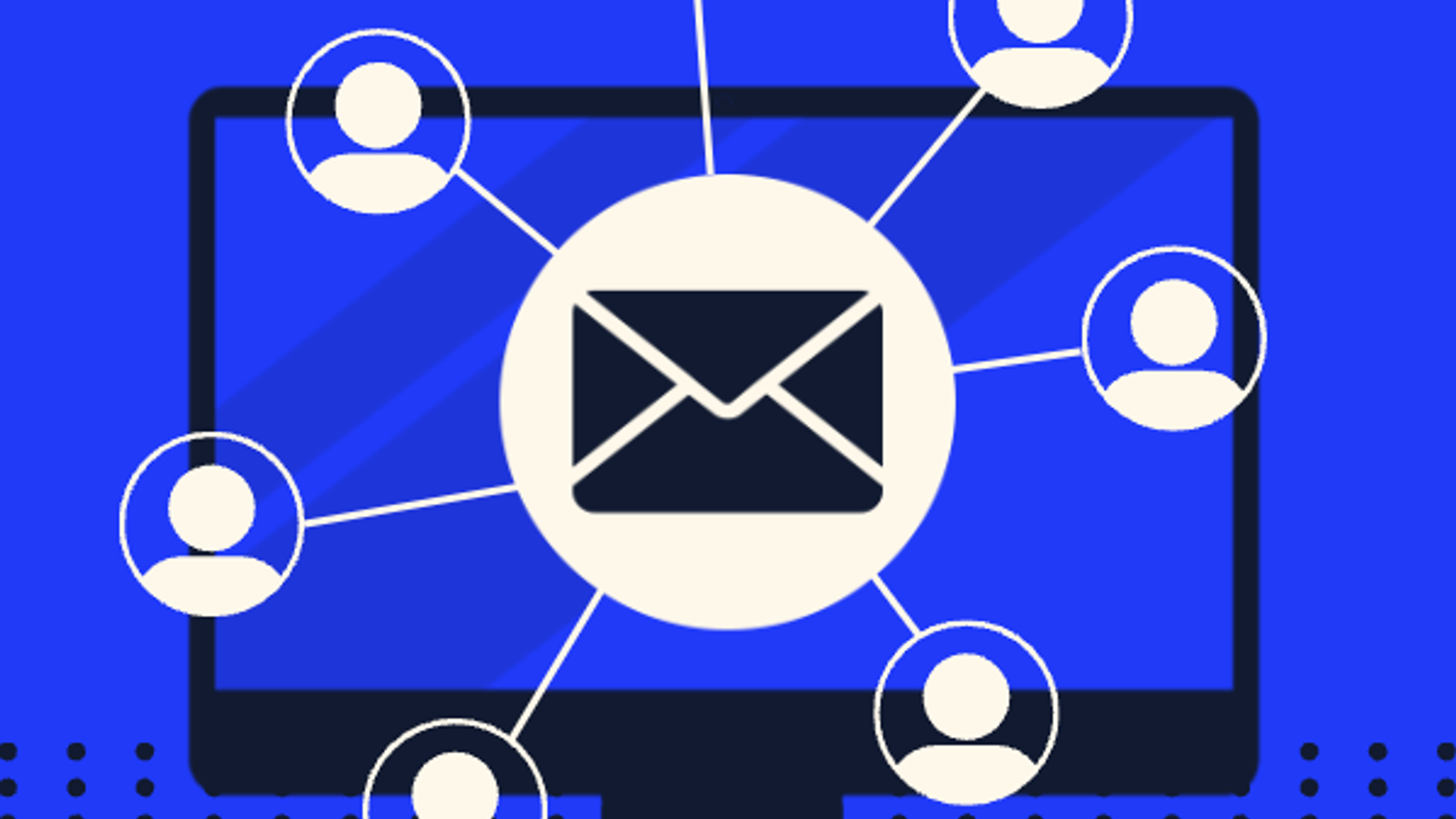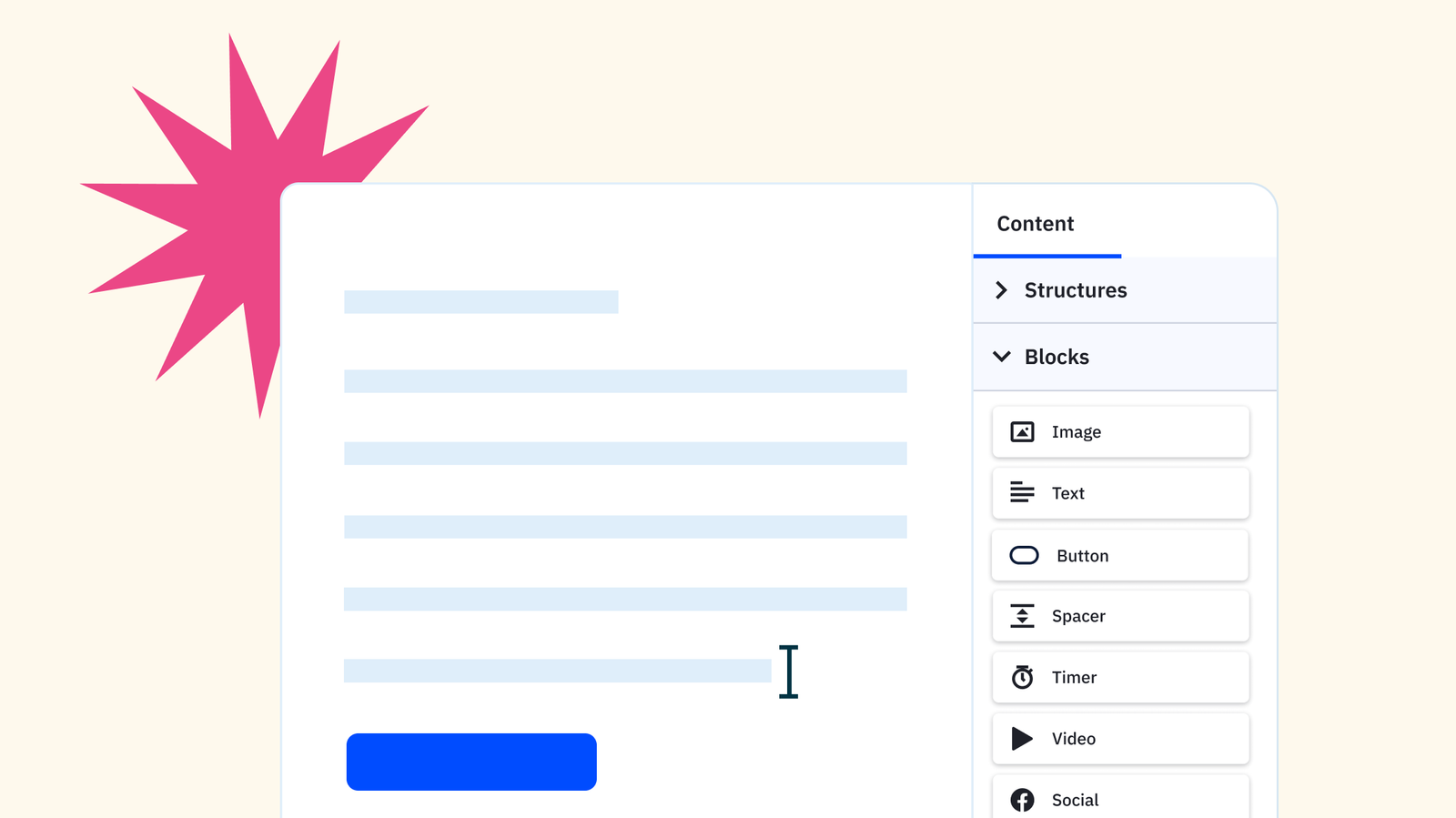Email marketing is more than just sending messages to your customers—it's about building meaningful connections. When done right, it strengthens brand relationships, reinforces trust, and keeps your audience engaged.
Unlike other marketing channels, email allows you to deliver personalized, targeted content that feels human, not robotic. That’s why businesses that master email marketing see higher engagement, stronger loyalty, and better conversion rates.
After reading this guide, you’ll know how to:
- Build an email list with engaged subscribers who want to hear from you.
- Create emails that drive traffic and encourage conversions.
What is email marketing?
Email marketing is a digital strategy that involves sending promotional messages, newsletters, or personalized content to a targeted audience. It helps businesses nurture relationships with prospects and existing customers, boost brand awareness, and drive sales.
A well-planned email marketing campaign allows your brand to consistently attract new leads and convert them into loyal customers. Automation makes much of this process happen seamlessly—keeping your audience engaged with minimal manual effort.
Why use email marketing?
Email marketing remains one of the most effective ways to connect with your audience, drive engagement, and increase sales. Unlike other marketing channels, it provides direct access to your customers' inboxes, allowing for personalized, timely communication.
Here’s why email marketing is a must-have in any marketing strategy:
- Cost-effective and scalable: Email marketing is a budget-friendly digital marketing strategy, delivering strong results with minimal investment. Email marketing platforms offer flexible pricing, making it accessible for businesses of all sizes.
- Highly targeted and personalized: With audience segmentation and automation, you can send personalized messages based on customer behavior, demographics, and past interactions. This leads to more relevant content, better engagement, and higher conversion rates.
- Measurable results and data-driven insights: Email marketing software provides detailed analytics on open rates, click-through rates, and conversions. By analyzing these metrics, businesses can refine their strategies and optimize campaigns for better performance.
- Stronger customer relationships: Email enables brands to nurture customer relationships by sharing valuable content, exclusive offers, and personalized recommendations. When done right, it fosters customer loyalty and encourages repeat business.
- Unmatched return on investment (ROI): Email marketing consistently delivers the highest ROI among digital marketing channels.
In 2023, more than 362 billion emails were sent and received daily worldwide. This continued growth highlights email’s dominance as a communication channel and reinforces its importance in any marketing strategy.
Key components of email marketing
Email marketing involves many moving parts, and understanding the key components can help you build a strong foundation for successful campaigns. Below are the fundamental elements of email marketing, each playing a crucial role in engagement, deliverability, and conversions.
Email lists
Your email list is the foundation of your email marketing strategy. A high-quality list consists of engaged subscribers who have opted in to receive communications from you. Focus on growing your list organically through sign-up forms, pop-ups, lead magnets, and gated content.
Pro tip: Never purchase email lists, as they can harm your sender reputation and email deliverability.
Segmentation and personalization
Not all subscribers are the same, so your emails shouldn't be either. Segmentation allows you to divide your audience based on demographics, behavior, or purchase history, while personalization ensures each message feels relevant.
Using data-driven insights, you can send tailored content that resonates with individual subscribers, increasing open and conversion rates.
Email service providers
An email service provider (ESP) is a platform for sending, automating, and tracking email campaigns. The right ESP provides essential features such as list management, automation workflows, analytics, and compliance tools. Look for an ESP that aligns with your business needs, integrates with your existing tech stack, and offers scalability as your email marketing strategy grows.
Compliance and privacy regulations
Email marketing must comply with regulations like GDPR, CAN-SPAM, and CASL to ensure responsible and legal communication. These laws dictate how businesses collect and use email addresses, requiring clear consent, easy opt-out options, and transparent data practices. Staying compliant protects your brand’s reputation and helps maintain trust with your audience.
Email design
Well-designed emails grab attention and drive engagement. A strong email should be visually appealing, mobile-responsive, and easy to read.
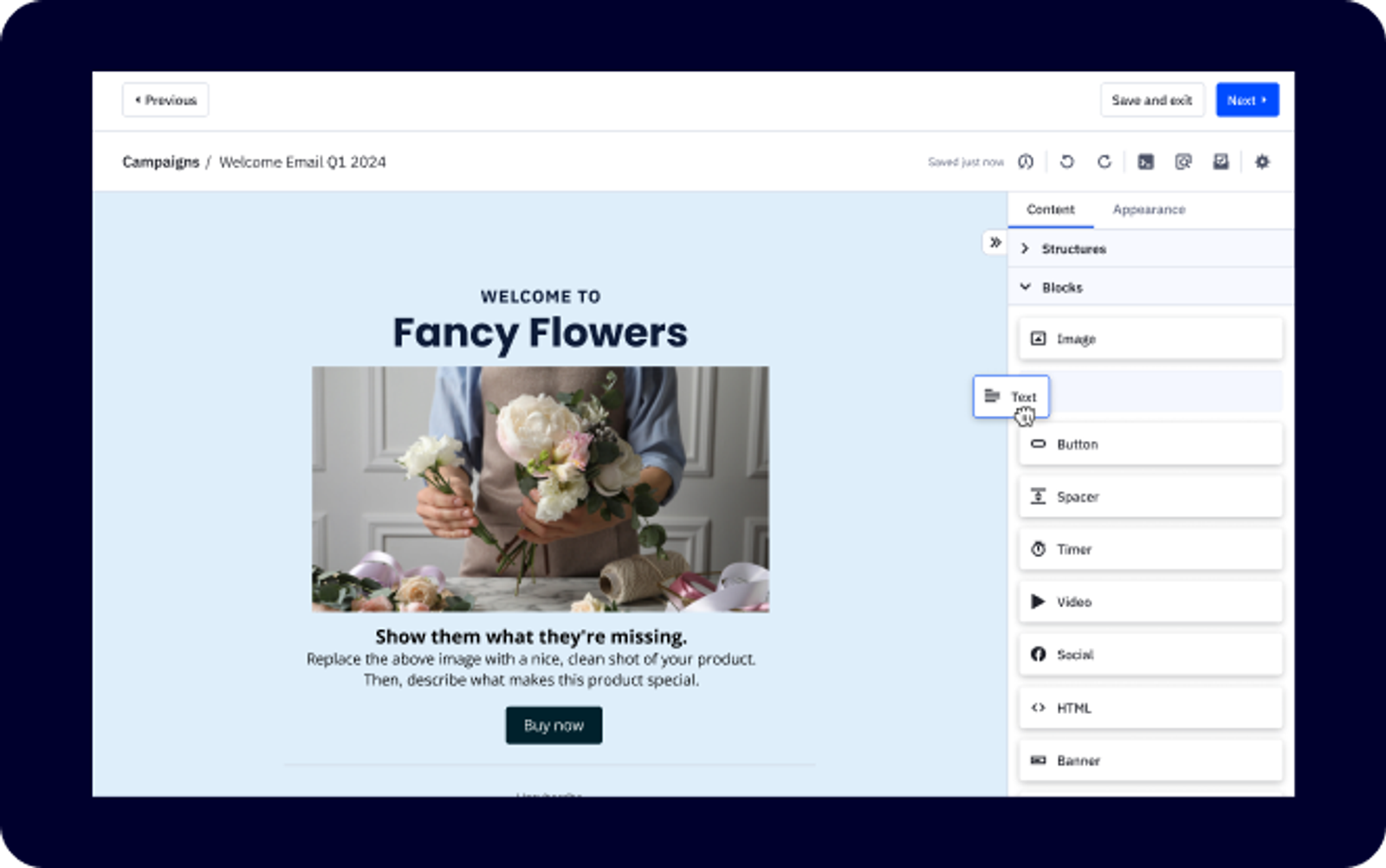
Use a clean layout, concise copy, and clear call-to-actions (CTAs) to guide recipients toward the next step. Avoid excessive images or overly complex formatting, which can slow loading times and impact deliverability.
Drip campaigns
Drip campaigns are automated email sequences that nurture leads over time. These pre-scheduled emails guide subscribers through the customer journey, whether it's onboarding new users, recovering abandoned carts, or re-engaging inactive subscribers. By strategically timing messages, drip campaigns keep your audience engaged without overwhelming them.
Important metrics
Tracking key metrics helps measure the success of your campaigns and identify areas for improvement. Open rates, click-through rates (CTR), bounce rates, and conversions provide insight into engagement levels, while unsubscribe rates can indicate whether your content is meeting audience expectations. Regularly analyzing these metrics allows you to refine your approach and improve results.
10 email marketing examples to use in your campaigns today
Not all types of emails serve the same purpose. The best email marketers leverage different kinds of campaigns to nurture leads, engage customers, and drive conversions. Below are 10 common email marketing examples and how and why to use them effectively.
Welcome emails
First impressions matter, and a well-crafted welcome email sets the stage for a lasting customer relationship. These emails greet new subscribers, introduce your brand, and guide them through what to expect.

A strong welcome email can encourage engagement from the start by offering a quick introduction, linking to valuable resources, or offering a special discount for first-time buyers. It can also help set expectations, ensuring subscribers know what kind of content they’ll receive and how often.
Newsletters
Email newsletters are a great way to consistently engage your audience with updates, insights, and valuable content. They keep subscribers informed about your latest blog posts, product launches, industry trends, or company news.
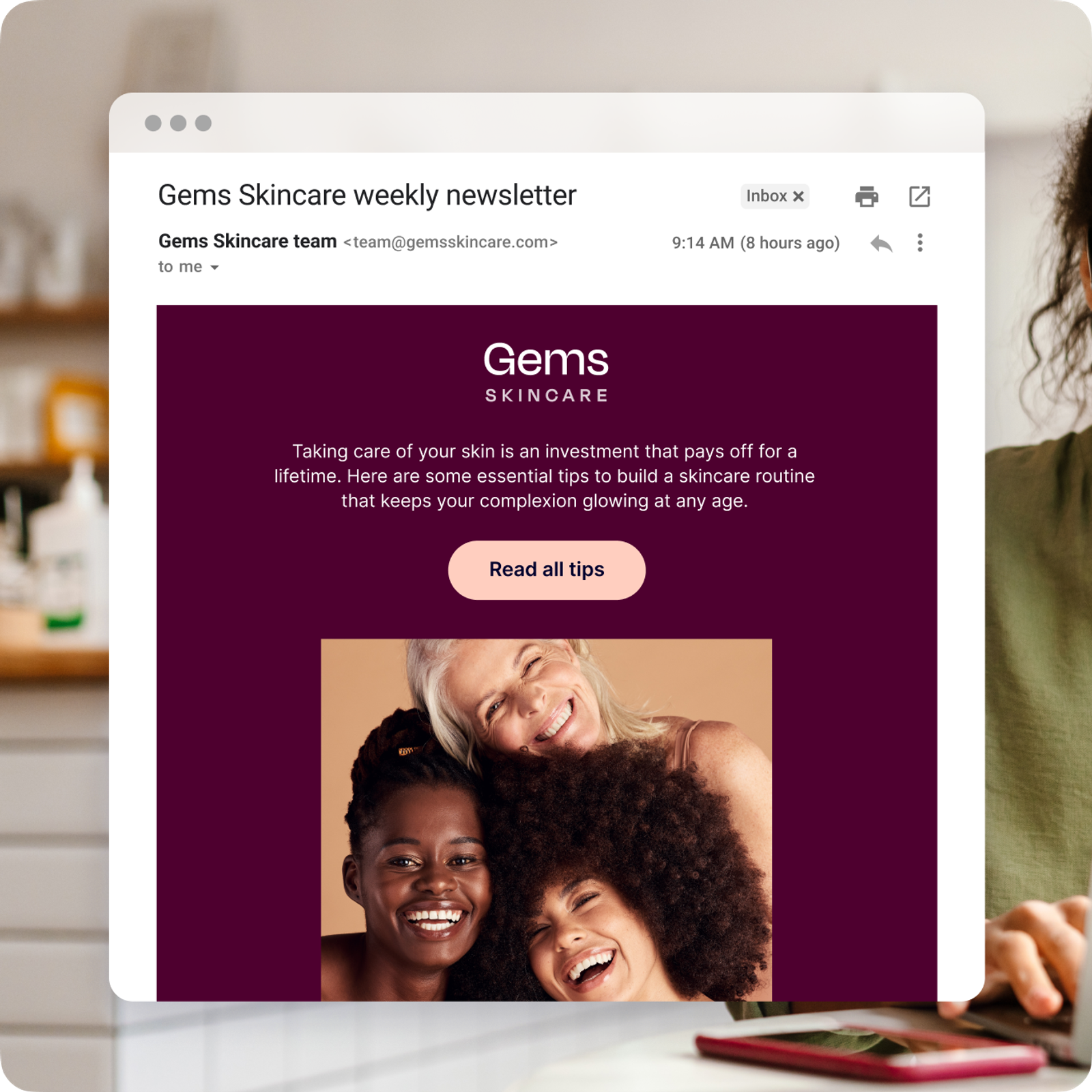
The best newsletters provide a mix of educational and promotional content, making them a valuable resource rather than just another sales email. They also help build brand authority and keep your audience engaged over time.
Promotional emails
Promotional emails are designed to drive immediate action—whether it’s a sale, limited-time offer, or product launch. They often feature eye-catching visuals, compelling copy, and a strong CTA.

A well-timed promotional email can boost sales, increase conversions, and re-engage customers who may not have interacted with your brand recently. They are especially effective when personalized based on user behavior, such as past purchases or browsing history.
Cold emails
Cold emails are outreach emails sent to people who haven’t yet interacted with your brand. These are commonly used in B2B marketing and sales prospecting to generate leads and start conversations.

To be effective, cold emails should be highly personalized, relevant, and provide clear value to the recipient. Instead of a generic sales pitch, a good cold email focuses on solving a specific problem or offering a unique benefit.
Abandoned cart emails
An abandoned cart email is a follow-up message sent to customers who added items to their cart but didn’t complete their purchase. These emails remind users about their pending checkout and encourage them to finalize their order.
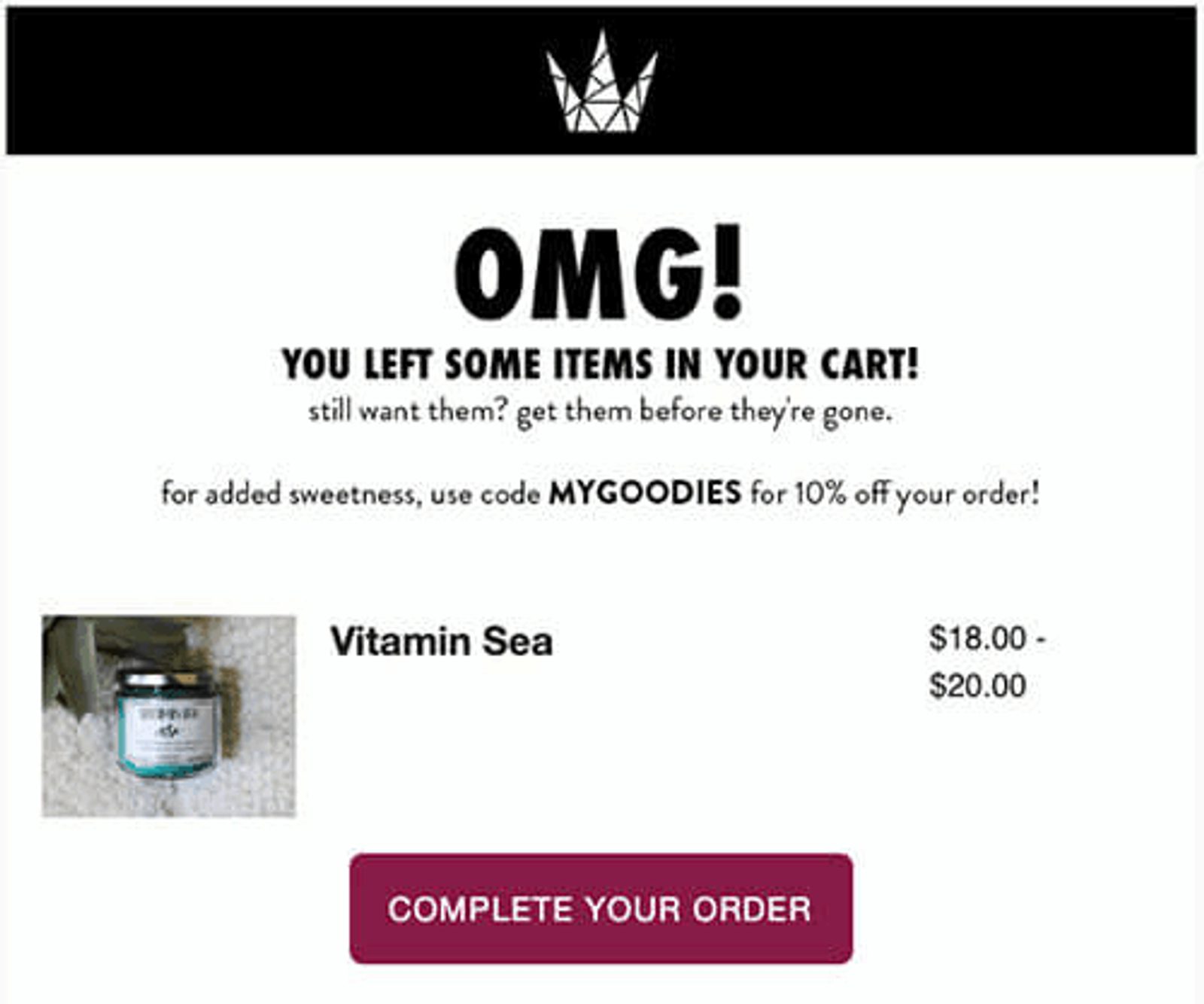
Abandoned cart emails work best when they combine urgency (e.g., “Your cart is about to expire”), incentives (e.g., free shipping or a discount), and reassurance (e.g., customer support availability or return policies). By nudging indecisive buyers to complete their purchases, abandoned cart emails can significantly recover lost revenue.
Transactional emails
Transactional emails provide essential information related to a customer’s action, such as order confirmation emails, shipping updates, password resets, and account notifications. Because they contain information the recipient expects, transactional emails have some of the highest open rates.

While transactional emails are primarily functional, they also present an opportunity to enhance the customer experience. Adding personalized touches, upsell recommendations or support resources can help increase engagement and build loyalty.
Re-engagement emails
Sometimes, email subscribers go cold. Re-engagement emails help rekindle interest by reminding inactive users why they signed up in the first place. These emails often offer incentives, highlight recent content, or ask for feedback.
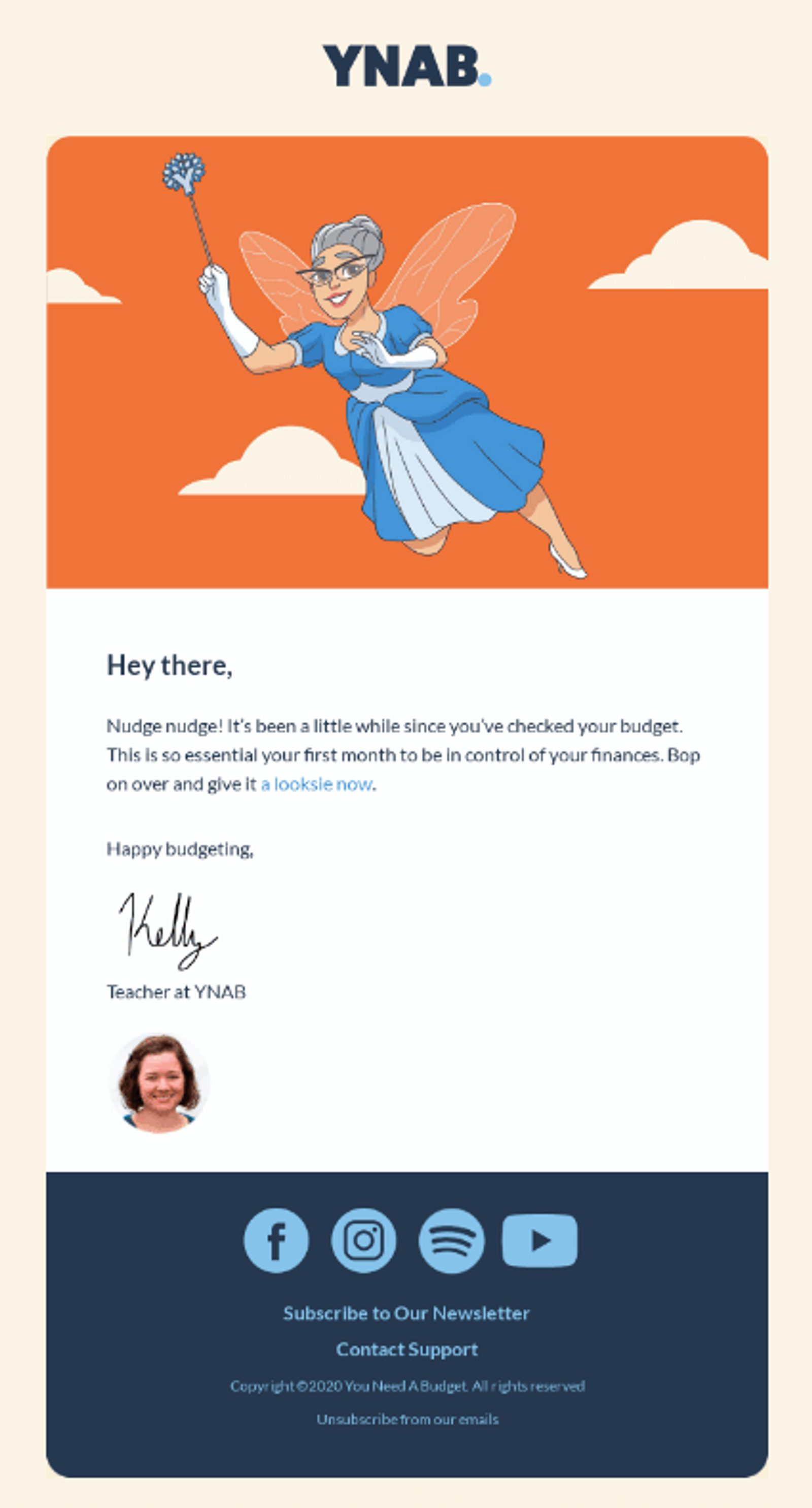
An effective re-engagement campaign can reduce churn and bring dormant subscribers back into the fold. If a subscriber remains unresponsive, a well-crafted sunset email (letting them know you’ll remove them unless they opt-in) can help clean your list and maintain deliverability.
Post-purchase follow-up emails
The relationship with a customer doesn’t end after a sale. Post-purchase emails nurture long-term loyalty by thanking customers, requesting reviews, or suggesting complementary products.

A well-timed post-purchase email enhances customer satisfaction and encourages repeat business. For example, an e-commerce store might send a personalized recommendation based on a past purchase, while a service provider could follow up with helpful onboarding resources.
Event invitations
Event emails invite subscribers to attend a webinar, conference, product launch, or other special event. They should clearly communicate the event’s value, date, time, and registration details.

Event emails often include multiple touchpoints to maximize attendance—an initial invite, a reminder email, and a final “last chance to register” email. Compelling subject lines and engaging visuals help drive sign-ups.
Seasonal or holiday emails
Holiday-themed emails capitalize on key seasonal moments to boost engagement and sales. These emails align with cultural events, major shopping holidays (e.g., Black Friday), or industry-specific peak seasons.

The best seasonal emails create a sense of excitement while providing timely offers, gift guides, or special content. Since inboxes are crowded during peak seasons, strong subject lines and exclusive deals can help your emails stand out.
If you’re looking for another unique way to connect with your audience, creating an audience to send emails for birthdays is another excellent way to build a loyal subscriber base.
Email marketing best practices
As you dive deeper into email marketing, here are four tips that the top ActiveCampaign customers use to get the most from their emails.
Avoid spam filters
If your emails aren’t reaching the inbox, they aren’t driving results.
Here’s how to keep them out of the spam folder:
- Build a permission-based list: Always ensure your recipients have explicitly opted in. Sending emails to users who haven’t subscribed increases spam complaints and could violate regulations like the CAN-SPAM Act and GDPR.
- Send from a reputable IP address: Email providers will block or filter your messages if your sending IP has been flagged for spam. Use a dedicated, high-quality IP or a trusted ESP with a strong sender reputation.
- Clean up your email templates: Poorly coded templates or excessive use of images, caps, and spam-triggering words (like “free” or “guarantee”) can lead to automatic filtering. Stick to simple, mobile-friendly designs and balance text with images.
- Personalize the "To" field: Avoid generic greetings like “Dear subscriber.” Instead, use merge tags to insert the recipient’s name. This will make your emails feel more authentic and less likely to be flagged.
- Make unsubscribing easy: Spam complaints often happen when users can’t find the unsubscribe link. Ensure every email includes a clear opt-out option.
- Encourage whitelisting: Ask engaged subscribers to add your email to their contact list or move your emails to their primary inbox (especially for Gmail users). This increases inbox placement and improves engagement signals.
Create eye-catching subject lines
Think of your subject line as the first scene of a movie or the opening sentence of a book. It needs to grab attention immediately. The best subject lines make recipients ask questions or feel a sense of urgency, leading them to take action.
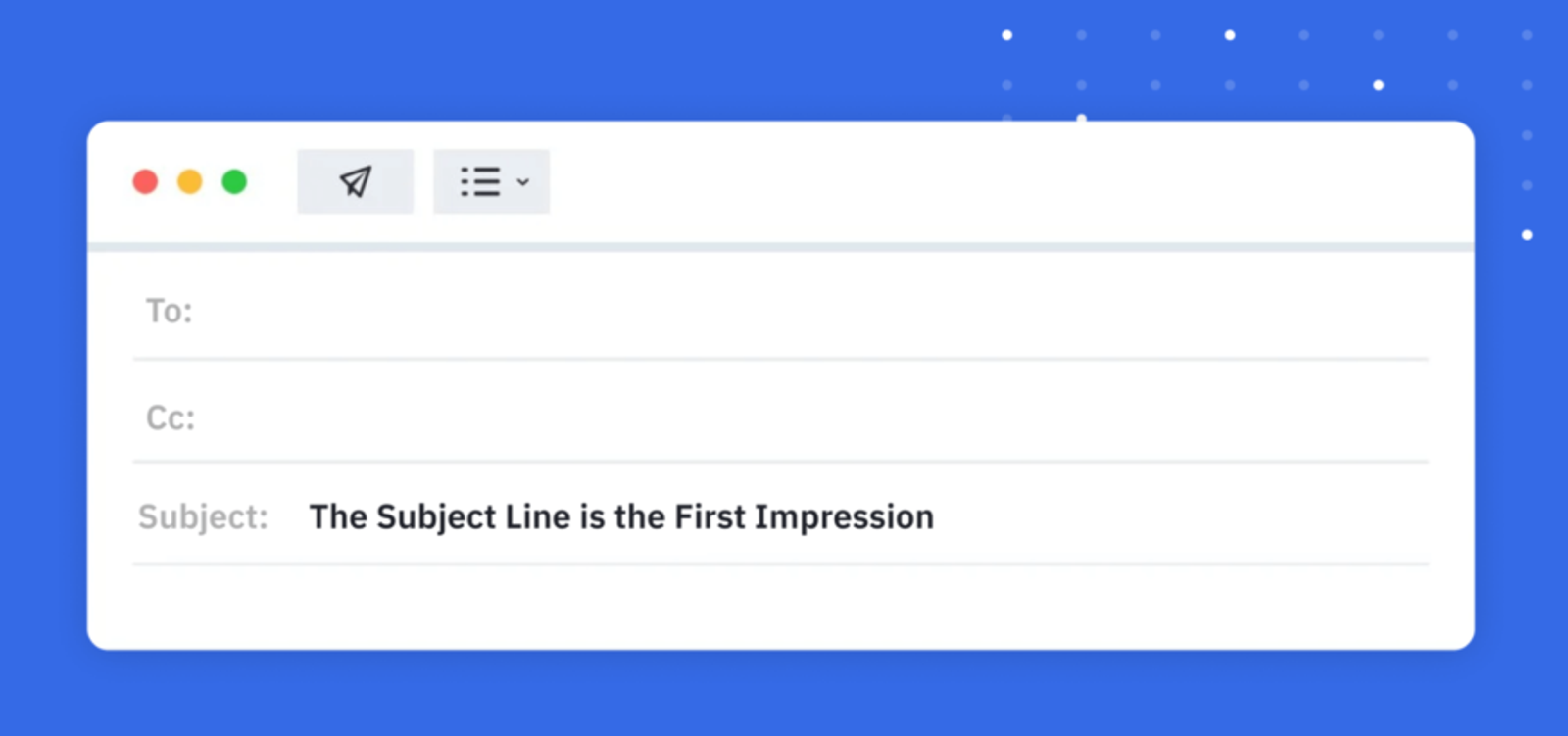
However, there’s a fine line between being intriguing and being too vague. If your subject line is overly mysterious, it can frustrate readers rather than entice them. Instead, aim for clarity with a slight element of curiosity.
Best practices for writing subject lines:
- Use a conversational tone: Write as if you're speaking to a friend—friendly, direct, and engaging.
- Incorporate numbers: Subject lines with numbers tend to stand out in crowded inboxes (e.g., "5 simple ways to grow your email list").
- Keep it short and scannable: Many people check emails on mobile devices, so aim for 40-50 characters to prevent truncation.
- Personalize when possible: Including the recipient's name or a relevant detail (e.g., “Sarah, your exclusive deal is inside!”) can boost open rates.
- Avoid spam triggers: Words like “free,” “urgent,” or excessive exclamation points (!!) can land your email in the spam folder.
Your subject line is the gateway to your email’s content. Make it count.
Personalize your emails
Effective email marketing is about making each recipient feel like you're speaking directly to them. Your audience isn’t a massive crowd; it’s individuals reading your emails alone, one at a time. The more tailored your email feels, the stronger the connection.
Basic personalization, like using merge tags to insert a recipient’s name, is a great start, but advanced personalization takes engagement to the next level.

Advanced ways to personalize your emails:
- Behavior-based automation: Trigger emails based on a subscriber’s actions, such as abandoned cart reminders, re-engagement campaigns for inactive subscribers, or thank-you emails after a purchase.
- Dynamic content blocks: Show different content to different segments within the same email. For example, a clothing retailer can display winter coats to customers in colder regions and t-shirts to those in warmer areas—all within the same email template.
- Product or content recommendations: Use past purchase history, website behavior, or email engagement to suggest relevant products, blog posts, or promotions tailored to each recipient.
- Personalized send times: Optimize delivery times based on when each recipient will most likely open and engage with emails. AI-driven tools like predictive sending analyze past behavior to determine the best time to reach each person.
- Geo-targeting: Tailor email content based on a recipient’s location, whether it’s promoting an event in their city, adjusting messaging based on regional holidays, or featuring products suited to their climate.
The more relevant your emails are, the more likely they will be opened, read, and acted upon. Personalization goes beyond just a name; it’s about making your audience feel understood.
Optimize for mobile
Your audience checks emails throughout the day, but chances are they do it on their phones, not desktops. If your emails aren’t optimized for mobile, they could appear broken, be difficult to read or load too slowly, leading to lower engagement and poor email deliverability.
Thankfully, most ESPs offer mobile-responsive templates and built-in optimization tools that make it easy to ensure your emails look great on any device. However, it is still important to follow best practices to maximize readability and click-through rates.
Tips for mobile-friendly emails:
- Use responsive templates. Choose an ESP that automatically adjusts emails to fit any screen size. Most modern platforms, including ActiveCampaign, provide this by default.
- Keep media lightweight. Large images and graphics slow down loading times and may negatively impact email deliverability. Compress images to reduce file size without sacrificing quality.
- Make text easy to read. Use a font size of at least 14px for body text and 20px+ for headlines to improve readability on smaller screens.
- Avoid relying on images alone. Some mobile email clients—like Android’s default mail app—disable images by default. Always include alt text and ensure your message is clear even if images don’t load.
- Use tappable buttons. Tiny links are hard to click on mobile. To improve accessibility, use buttons with a minimum size of 44x44 pixels.
A mobile-first approach ensures your emails are easy to read, visually appealing, and engaging—no matter what device your audience uses.
Optimize your send times
When you send an email, it matters just as much as what you send. If your emails hit inboxes at the wrong time, they can get buried under other messages, leading to lower open and engagement rates.
How to find the best send times:
- Start with industry benchmarks. Research suggests that Tuesday through Thursday mornings often see the highest open rates, but every audience is different.
- Test and analyze. Run A/B tests on different send times and review open and click-through rates to identify patterns.
- Use AI-powered send-time optimization. Some email platforms (like ActiveCampaign) analyze recipient behavior to automatically send emails when each subscriber is most likely to engage.
Leverage AI
Artificial intelligence is transforming email marketing by automating manual tasks, predicting user behavior, and improving personalization.
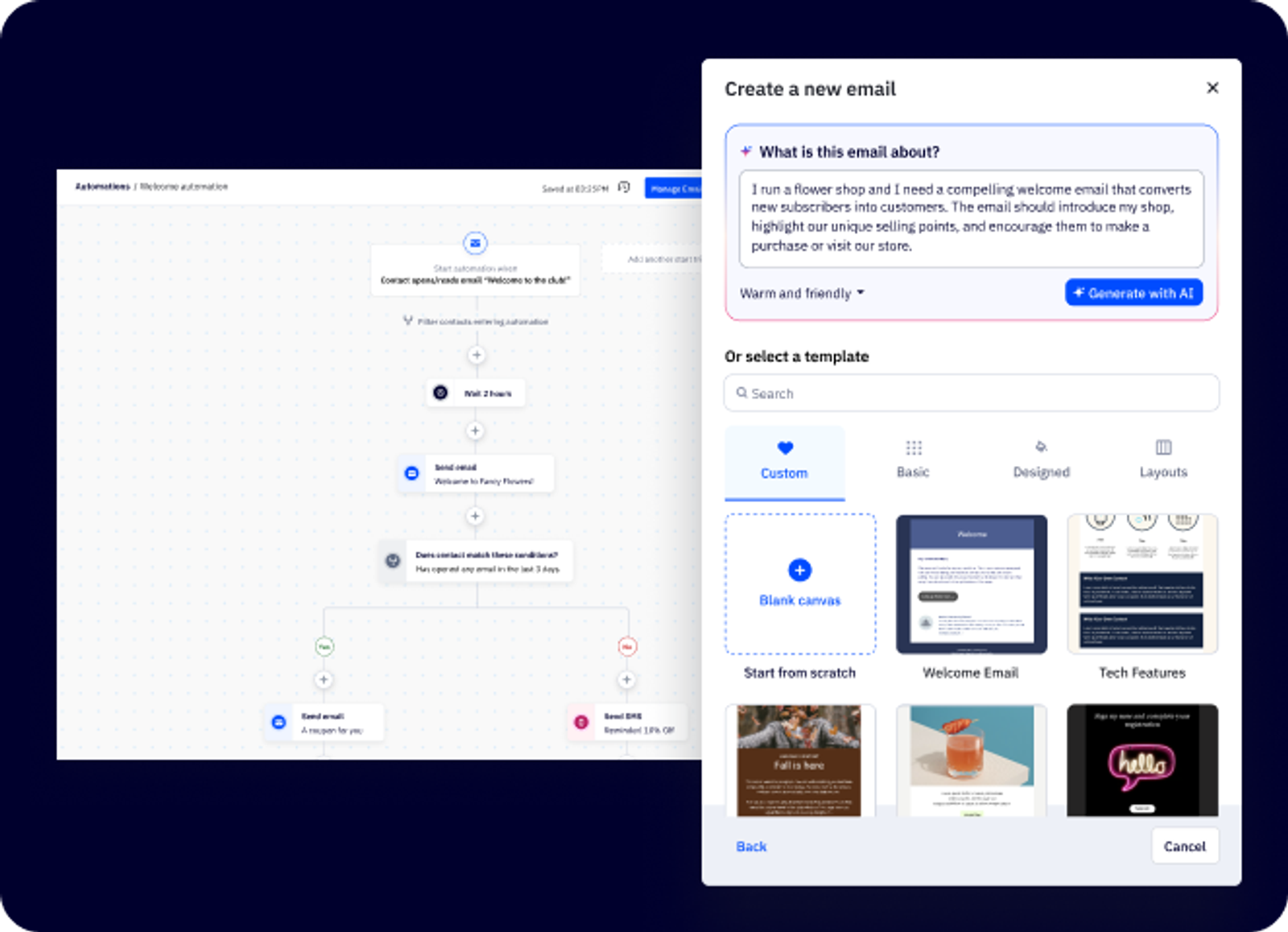
Ways to use AI in email marketing:
- Generate subject lines and copy. AI tools can help craft compelling subject lines and email content based on engagement data.
- Predict customer behavior. AI can analyze past interactions to determine which emails a subscriber will most likely open or click.
- Automate segmentation and targeting. AI-driven audience segmentation ensures the right message reaches the right person at the right time.
With AI-powered insights, you can optimize campaigns faster and create more personalized experiences at scale.
Grow your email list
Your email list is your most valuable asset, but only if it’s built the right way. Growing your list isn't about collecting as many addresses as possible, it’s about attracting engaged subscribers who want to hear from you.
Best practices for growing your list:
- Use signup forms and lead magnets. In exchange for an email address, offer a valuable incentive (like an exclusive discount, guide, or webinar).
- Encourage signups across channels. Promote your email list on your website, social media, and even in transactional emails.
- Avoid purchasing lists. Buying email lists is not only ineffective but also hurts your deliverability and can violate privacy regulations.
A high-quality, permission-based list ensures better engagement and long-term email marketing success.
Connect email campaigns to other channels
Email doesn’t exist in a vacuum. It works best when combined with other marketing channels to create a seamless customer experience.
Ways to integrate email with other channels:
- Social media: Share snippets of your emails on social media and encourage followers to subscribe for exclusive content.
- SMS marketing: Use SMS to reinforce key email messages, such as reminding customers about an expiring promotion.
- Website and landing pages: Ensure your email content aligns with your website messaging and directs users to a consistent experience.
- Paid ads: Use email data to build retargeting campaigns, reaching subscribers across multiple touchpoints.
A multi-channel approach strengthens your marketing efforts, keeping your brand top-of-mind across multiple platforms.
Automate your email marketing
Once you’ve built a strong email list and optimized your campaigns for engagement, the next step is automation. Email automation allows you to send the right message to the right person at the right time without constant manual effort.
With marketing automation, you can increase conversions, strengthen relationships, and scale your marketing without overwhelming your team. Best of all, once you set up a solid automation strategy, your emails work for you in the background.
Autoresponders: engage subscribers automatically
Autoresponders are emails triggered by specific customer actions. They help you nurture leads, recover abandoned carts, and automatically encourage repeat purchases.
Examples of autoresponder campaigns:
- Cart abandonment emails: If a customer leaves items in their cart, send a friendly reminder like, “Hey, did you forget something?” with a direct link to checkout.
- Welcome series: After a user subscribes, introduce them to your brand, share valuable content, or offer a special discount.
- Post-purchase follow-ups: Encourage repeat business with emails recommending complementary products or offering an exclusive reorder discount.
Autoresponders help you engage with subscribers at key moments in their journey, strengthening their connection with your brand.
Jumpstart your automation strategy with ActiveCampaign’s pre-built automation recipes. Set up a welcome series, abandoned cart emails, and more in minutes.
Create an email sequence map
Before setting up an autoresponder, outline how many emails you’ll send, when they’ll go out, and what each one will achieve.
Best practices for structuring your sequence:
- Plan for timing and frequency: Most nurture sequences should space emails out by at least 48 hours to avoid overwhelming subscribers, but sales sequences may require more frequent sends.
- Follow the 80/20 rule: 80% of emails should provide value (education, insights, tips), while only 20% should be directly promotional.
- Consider user behavior: If a subscriber engages with one email, your automation can adjust the next message accordingly, creating a more personalized experience.
Measure and optimize your email automation
Automation isn’t a “set it and forget it” process—you need to track key performance metrics and optimize over time.
Monitor these key metrics:
- Open rate: Low open rates? Test new subject lines or adjust your send times.
- Click-through rate (CTR): If people open but don’t click, refine your email copy or improve your CTAs.
- Unsubscribe rate: A small amount is normal, but a high unsubscribe rate could signal a mismatch between expectations and content.
Pro tip: To improve engagement rates over time, run A/B tests on subject lines, email copy, and send times.
Ready to get started with email marketing?
Whether you run a small business or lead marketing efforts for a larger company, email marketing services are one of the most effective ways to drive engagement, build relationships, and boost conversions. A well-crafted email strategy helps you stay connected with your audience, promote new products or offers, and turn first-time buyers into loyal customers.
With ActiveCampaign, you can take your email marketing to the next level with:
- Automation that works for you: Build personalized drag-and-drop customer journeys with automated workflows that engage subscribers at the perfect moment, whether just joining your list or returning for a repeat purchase.
- Advanced segmentation: Deliver highly targeted campaigns based on customer behavior, preferences, and demographics to ensure your messages are always relevant.
- AI-powered optimizations: Predictive sending, content recommendations, and dynamic content ensure your emails land in inboxes at the right time with the right message.
- Comprehensive analytics: Get real-time insights on opens, clicks, and conversions, so you can measure what’s working and continuously improve.
- Omnichannel marketing: Combine email with SMS, social ads, and site messaging to create seamless customer experiences that keep your audience engaged across multiple touchpoints.
Start your free trial today and see how ActiveCampaign makes email marketing easier, smarter, and more effective!
Email marketing FAQs
Let’s answer some of the most common questions about email marketing strategy, execution, and measurement.
How do I choose an ESP?
Selecting the right ESP depends on your business size, goals, and budget. Consider these key factors:
- Ease of use: Is the platform intuitive and beginner-friendly?
- Features: Does it offer automation, segmentation, and personalization?
- Templates and design: Are there pre-built templates, or will you need to code your own?
- Pricing: Is it scalable as your email list grows?
- Integrations: Does it connect with your CRM, e-commerce platform, or other email marketing tools?
How do I measure the ROI of my email marketing?
Email marketing ROI is typically measured by tracking key performance metrics and comparing revenue generated against campaign costs. To calculate ROI:
- Track key metrics: Monitor open rates, click-through rates (CTR), and conversions.
- Use attribution models: Connect sales data to email campaigns using UTM tracking or CRM integrations.
- Calculate revenue impact: Compare revenue generated from email-driven conversions against your investment (ESP costs, content creation, etc.).
- Analyze customer lifetime value (CLV): Consider the long-term impact of email nurturing, not just immediate sales.
How do I improve email deliverability?
Ensuring your emails land in the inbox, not spam, is essential for success. Follow these best practices:
- Authenticate your emails: Set up SPF, DKIM, and DMARC records to verify your sender identity.
- Maintain a clean list: Regularly remove inactive subscribers and avoid sending to purchased lists.
- Engage your audience: Focus on high-quality, relevant content that keeps subscribers opening and clicking.
- Optimize sending frequency: Too many emails can trigger spam complaints; too few may lower engagement.
- Monitor deliverability metrics: Use your ESP’s reporting tools to track bounce rates, spam complaints, and inbox placement.
Implementing these strategies will boost email performance and ensure your messages reach your audience at the right time.

